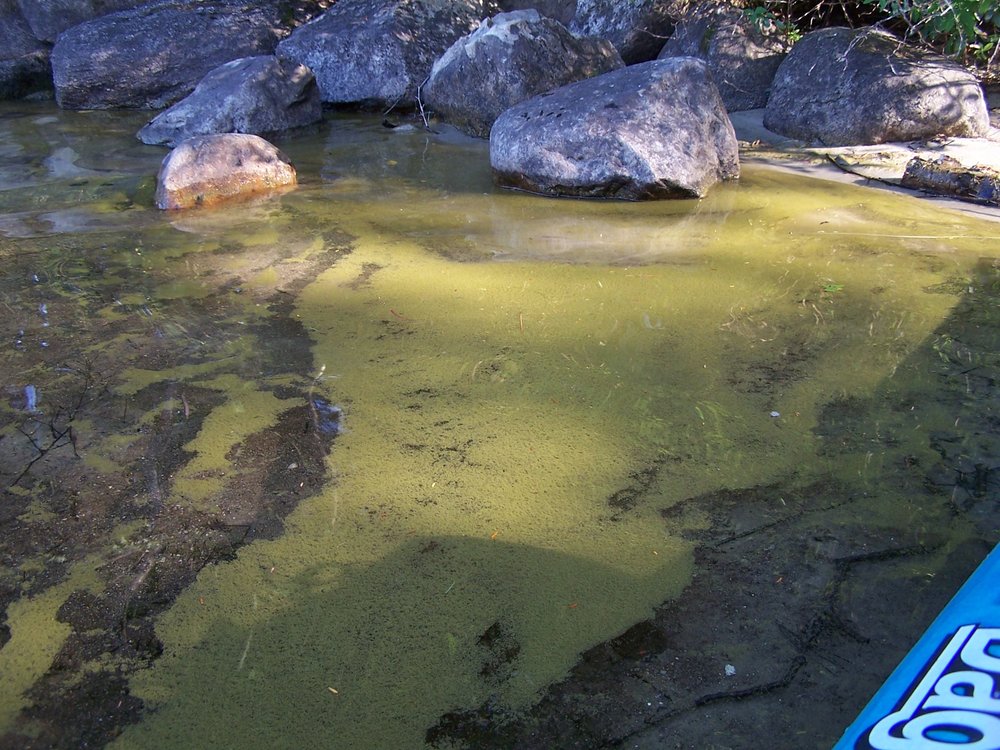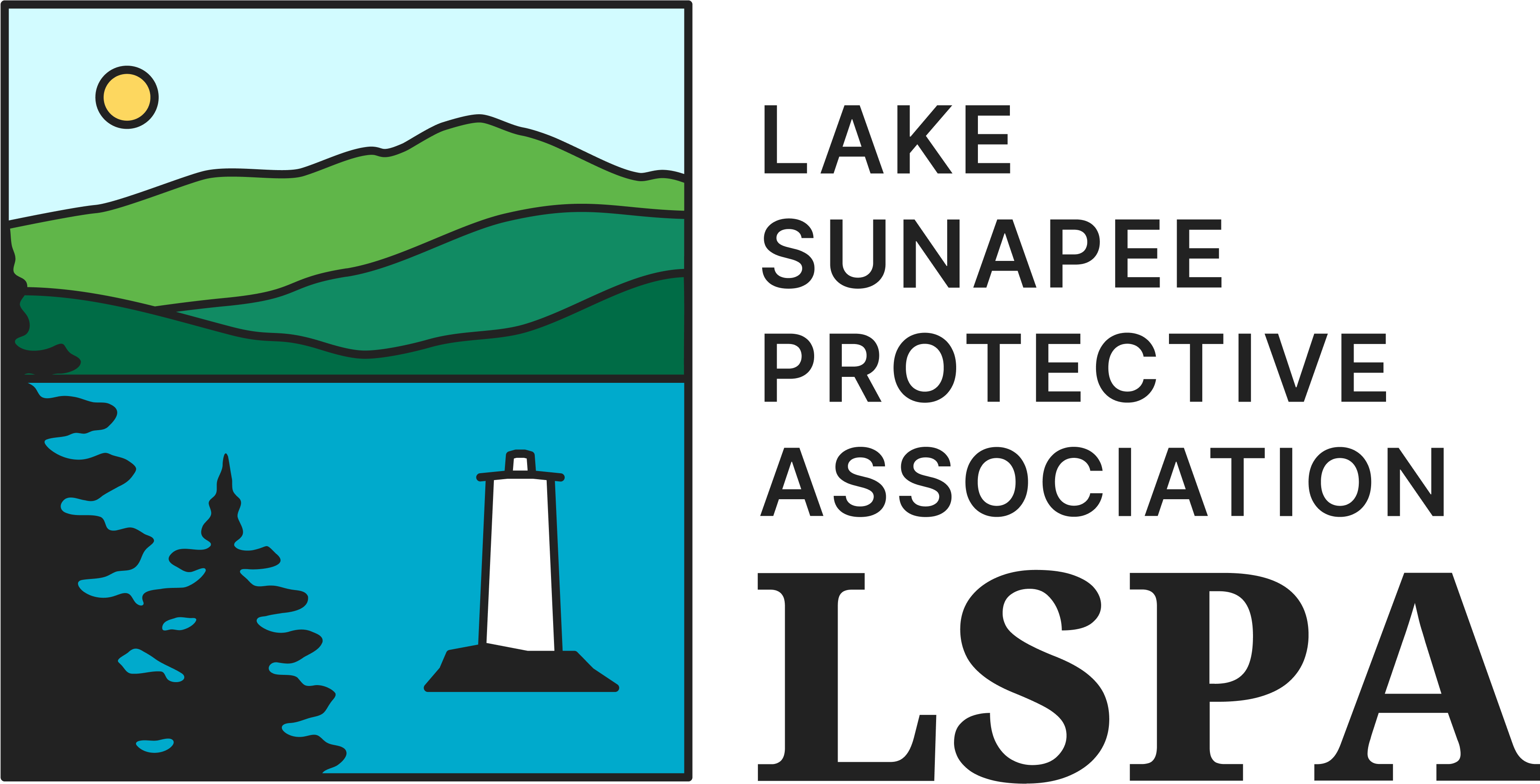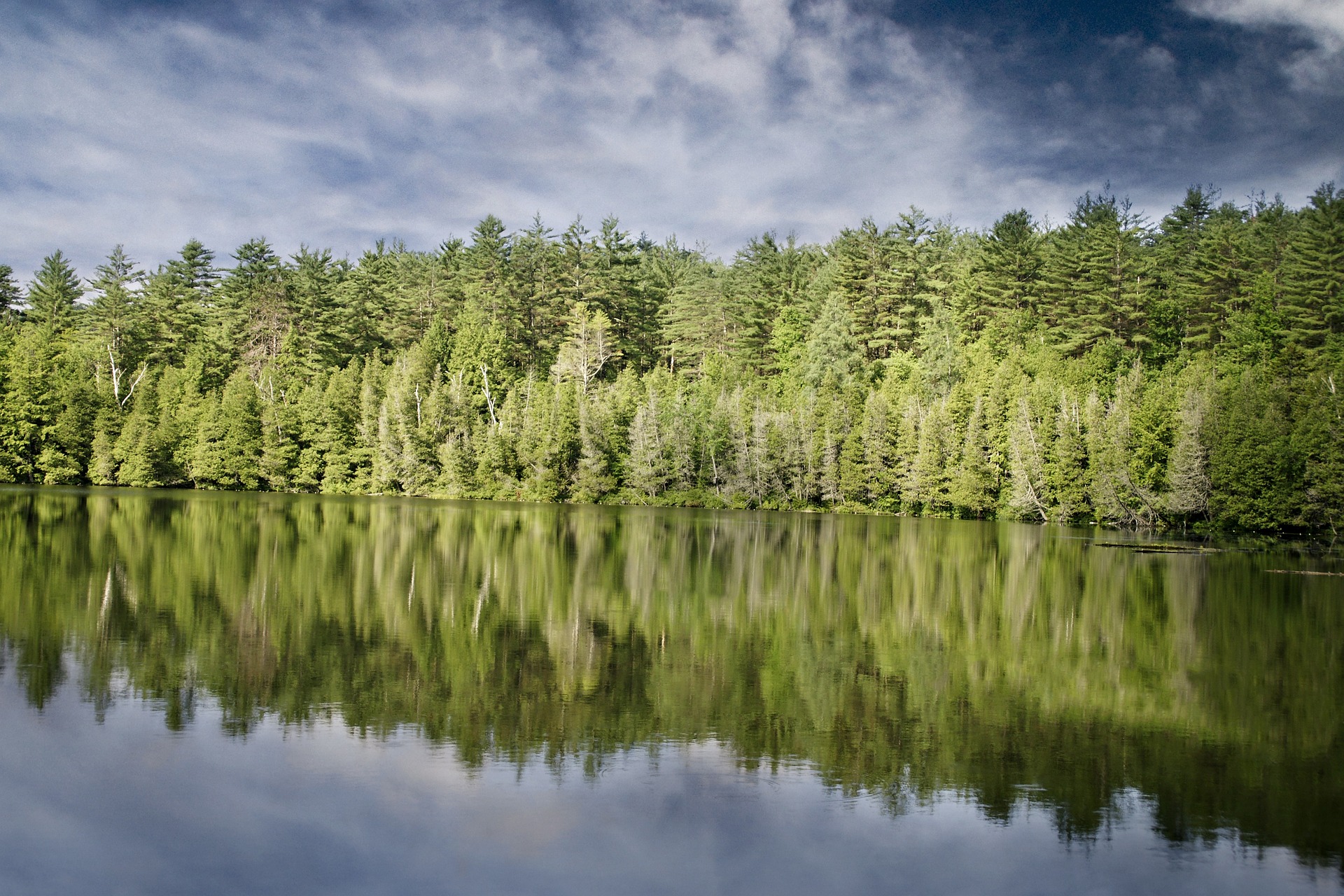What Are Cyanobacteria?
Cyanobacteria, formerly known as blue-green algae, are some of the oldest organisms on Earth. They are photosynthesizing bacteria that are commonly classified as algae (though they are not actually algae). The size and shape of a cyanobacteria colony varies by species.
There are many kinds of cyanobacteria, they don’t all look alike, and not all are harmful. A common one in Lake Sunapee that is visible to the named eye is called Gloeotrichia echinulata or Gloeo for short. Gloeo form colonies the size of a pin head (about 1.5 mm or 1/16 inch) and are light yellow green in color. Other common cyanobacteria are not visible to the naked eye until they form a bloom. The bloom looks like a surface scum that can range from yellow green, bright green, to slightly blue green.
While cyanobacteria are naturally occuring in our lakes, certain environmental conditions can lead to blooms. Heavy rains that wash nutrients off the land and into our waterbodies, followed by warm, sunny weather create ideal conditions for cyanobacteria to thrive.

If You Suspect a Bloom
If you see a possible cyanobacteria bloom, please call LSPA right away at 603-763-2210 so we can take a look and collect a sample if necessary. Be prepared to provide the exact location and a detailed description of what you are seeing.
You can also report your sightings directly to NHDES through their online form.
*If you see anything suspicious we recommend that you stay out of the water and keep your pets out too.
Other Cyanobacteria Resources
NH’s Cyanobacteria Plan: A Statewide Strategy
NHDES Harmful Algal Blooms page
Healthy Swimming Mapper – link to map with current advisories or alerts from NHDES
Cyanobacteria Look-Alikes
Pollen
Pollen grains are small and close together. Wind can blow them near the shoreline where they aggregate and form smoky wispy “clouds.”
Green Filamentous Algae
Cotton candy-like masses that are often green or yellowish in color and are seen free-floating in the water column or attached to sticks and other debris.
NHDES suggests to determine if it’s filamentous algae or cyanobacteria to perform a stick test. “Grab a stick and attempt to lift the mass out of the water. If it stays on the stick when lifted out of water and appears as a bundle of green slimy threads of hair, it is most likely green filamentous algae. If it disperses and clouds the water, and you cannot easily lift a bundle, then it could be cyanobacteria.”
Click here to read more about Green Filamentous Algae from NHDES.






